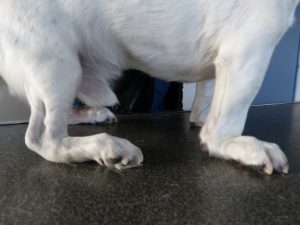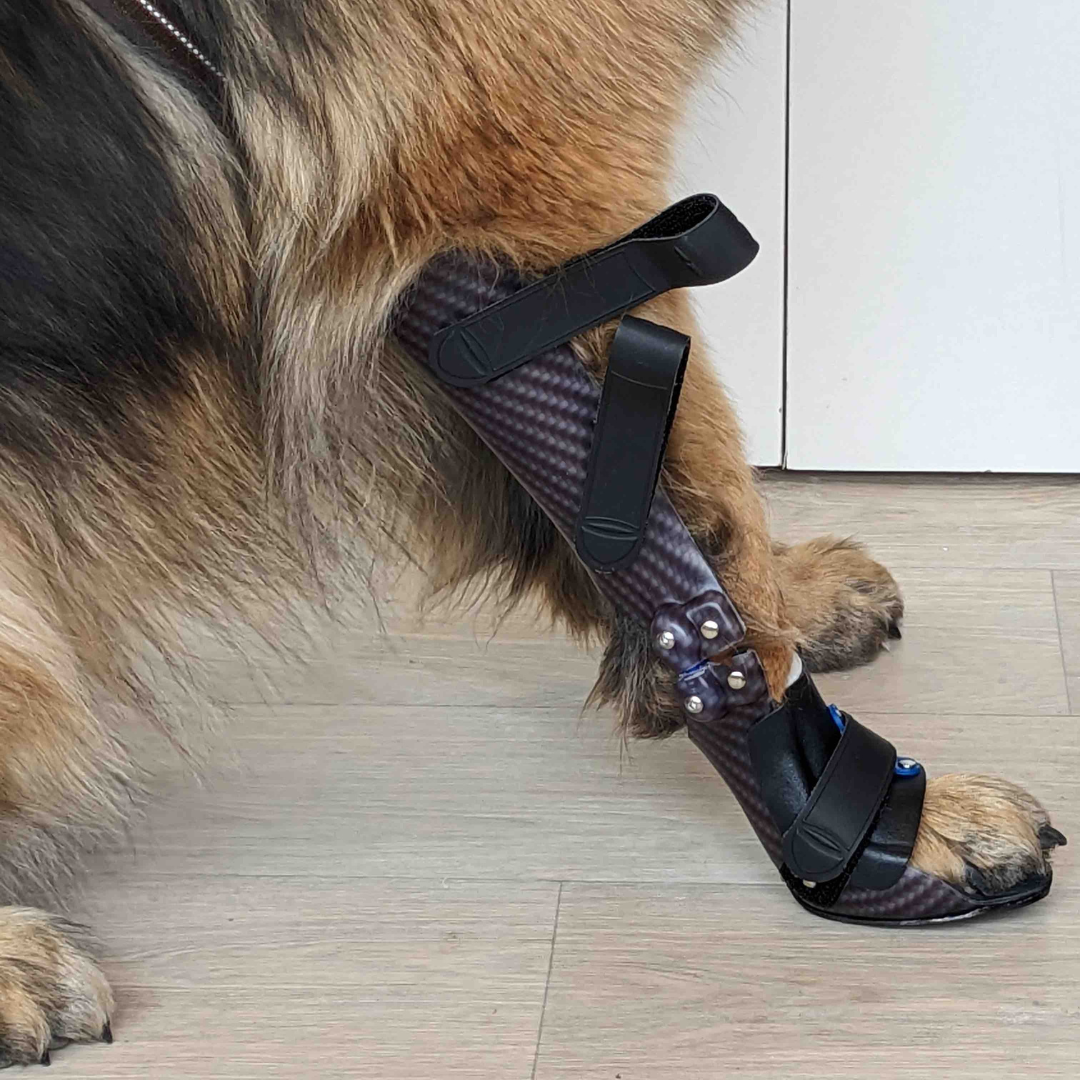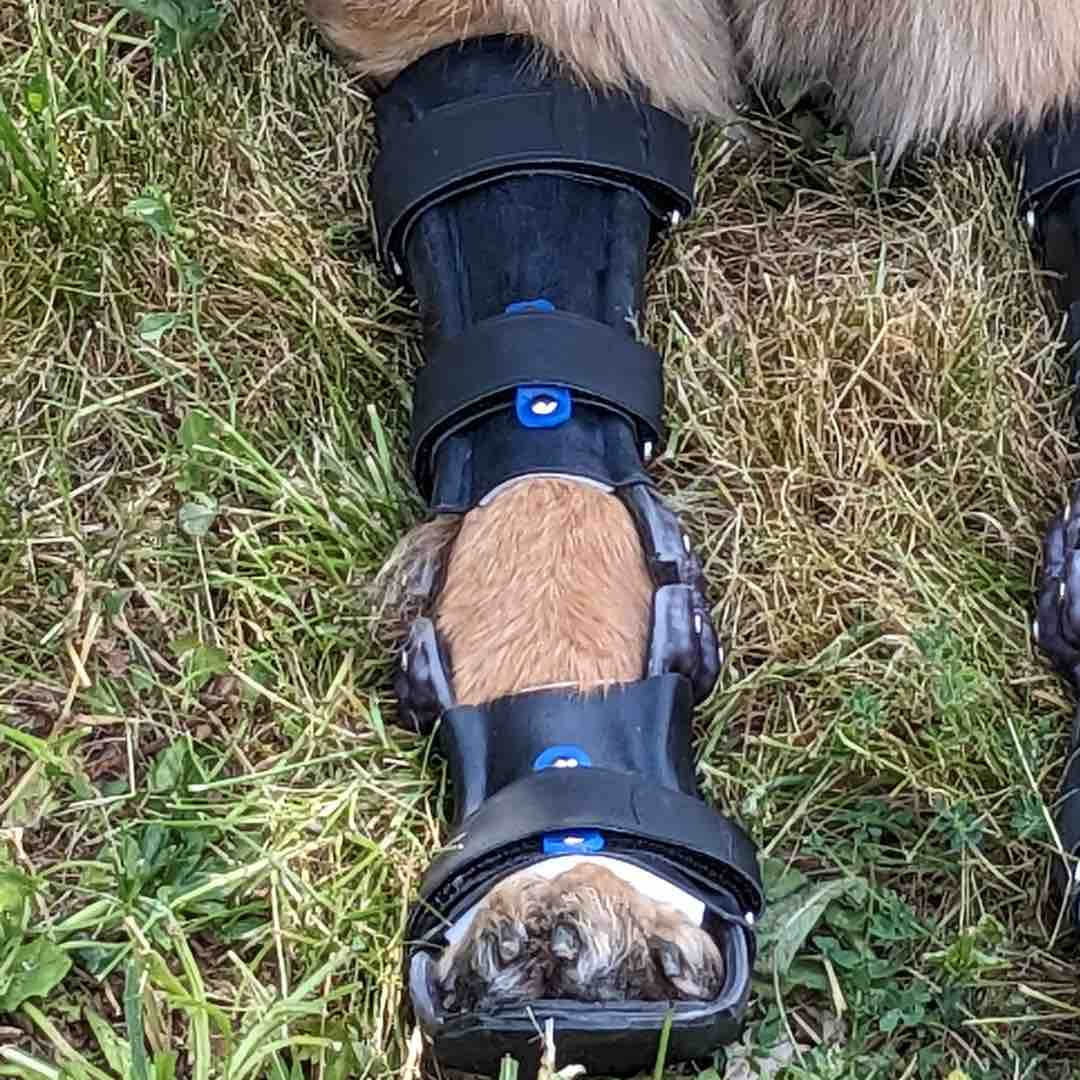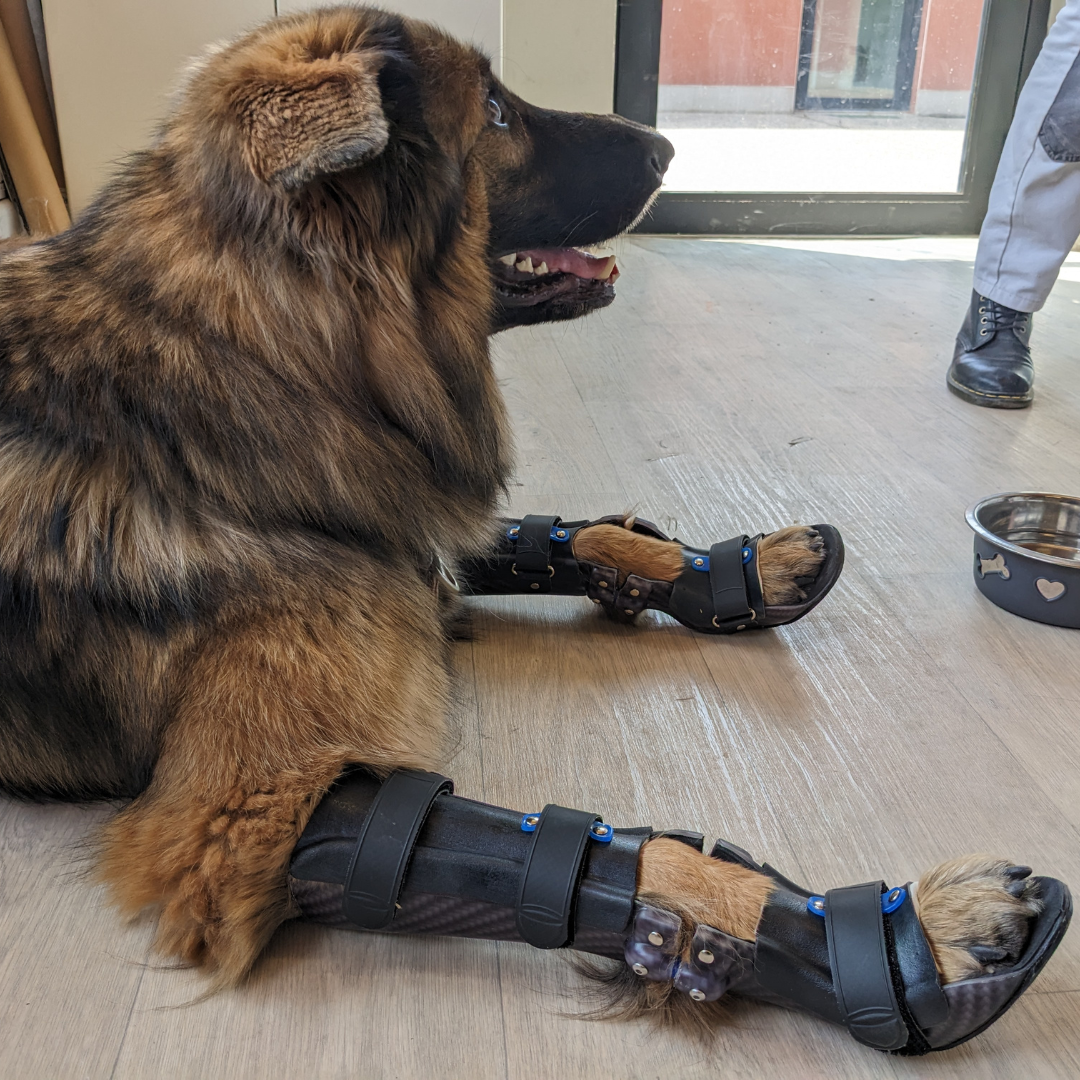Meeting with Antoine Maitre, orthoprosthetist and founder of Orthopia-Prothèses, for the management of a young dog with bilateral carpal hyperextension.
Support using orthopedic devices in this case.
In collaboration with the attending veterinarian and the owners of the animal.
Carpal hyperextension syndrome, a common lesion
Considered a form of sprain, carpal hyperextension can be caused by multiple factors.
As for example traumas (fall, jump, etc.) but not only. Certain breeds of dogs have particular predispositions for this type of locomotor disorder.
The female dog featured in this article (named Phinea) suffers from mild to moderate dysplasia in the hips and elbows.
It is a compensation of these different hyperlaxities which would be at the origin of the affections of her carpus.
In its extreme forms, carpal hyperextension can cause the animal to adopt a plantigrade gait.
The carpus sag so much that they touch the ground.

Image source: vet-orthopedie.com
Equipment for the prevention of arthrodesis
In the case of Phinea, the attending veterinarian initially advised the use of orthopedic devices avoiding the need for surgery. These aids have been particularly recommended for the long walks that this young 4-year-old dog regularly takes with her owners.
The articulated brace currently allow the animal to be kept moving, to maintain its muscle mass and to limit the development of osteoarthritis.
On the other hand, the different dog braces are not equal! In the case of Phinea, the tissue solutions available on the market proved to be too flexible to contain the retroversion of her carpus, movements harmful to her health and which the attending veterinarian absolutely seeks to avoid.
This type of device is too permissive and does not provide the necessary movement corrections. The aggravation of the hyperextension syndrome is then very likely and the study of a surgical approach would become unavoidable.
Contrary to flexible solutions which were not suitable for the care of Phinea, it would have been completely makes it possible to make totally fixed brace for the management of this type of pathology.
In order to limit movement, two possibilities are available to the veterinarian-surgeon depending on the severity of the case to be treated:
- The application of fully fixed dog braces that do not allow movement. This type of option is considered, for example, in severe cases where arthrodesis is not possible or feasible. You can find an example of this type of support on Orthopia Youtube channel
- The application of articulated dog braces that allow a more or less strict range of motion, determined by the veterinarian. This is the option that was chosen in the case of Phinea.
These two alternatives can be made by the company Orthopia-Prothèses, as can the design/manufacture of flexible braces.

Step by step
The realization of a custom device is done in association with the veterinarian who follows the animal and takes place in several stages:
1/ Mold taking
The animal is carefully examined in order to collect all the measurements necessary for the design of its orthopedic assistant.
A clinical examination is also carried out. This is essential to take into account the biomechanics specific to each patient. The devices must strictly respect the specific gait pattern for each individual.
A molding is then applied, generally in plaster, for a manufacture perfectly adapted to the morphology of the animal.
The realization of a custom-made device varies according to many parameters, such as for example the complexity of the movement restrictions requested by the veterinarian, total or partial immobilization, use of offset axes, articulated or non-articulated device, choice of angulations, articulation to sector etc
In the case of this support for hyperflexion of the carpals, it was recommended to allow the flexion of the articulation in its normal functioning, but to limit any hyperextension. The canine brace then comes to a stop, to prevent this movement, to the degree indicated by the veterinarian.
2/ Testing the device
Once produced, the device is then tested in real life on the animal. Modifications must sometimes be made (too large corrections or, on the contrary, too little limitation of movement).
The trial appointments therefore differ from one patient to another and according to the changes needed to be made.
3/ Final installation of the device
After the required modifications have been made, a final appointment between the ortho-prosthetist and the animal is then carried out.
The correct adaptation of the brace is checked one last time directly on the patient.
Locomotion with the device is checked and recommendations for proper use of the equipment are shared with the owners.
The adaptation protocol must be progressive and under supervision. Wearing dog brace twice a day for a period of 40min has for example been recommended for the good acclimatization of Phinea.
This process allows the skin of the limbs to tan gently, without causing painful or deleterious lesions. Advice on maintenance and cleaning are also given during this last appointment.
During future clinical examinations, a simple check by the attending practitioner is necessary to ensure that the assistance equipment suits her. Recommendations for modifications can be made over time, in order to support the animals throughout their rehabilitation.







